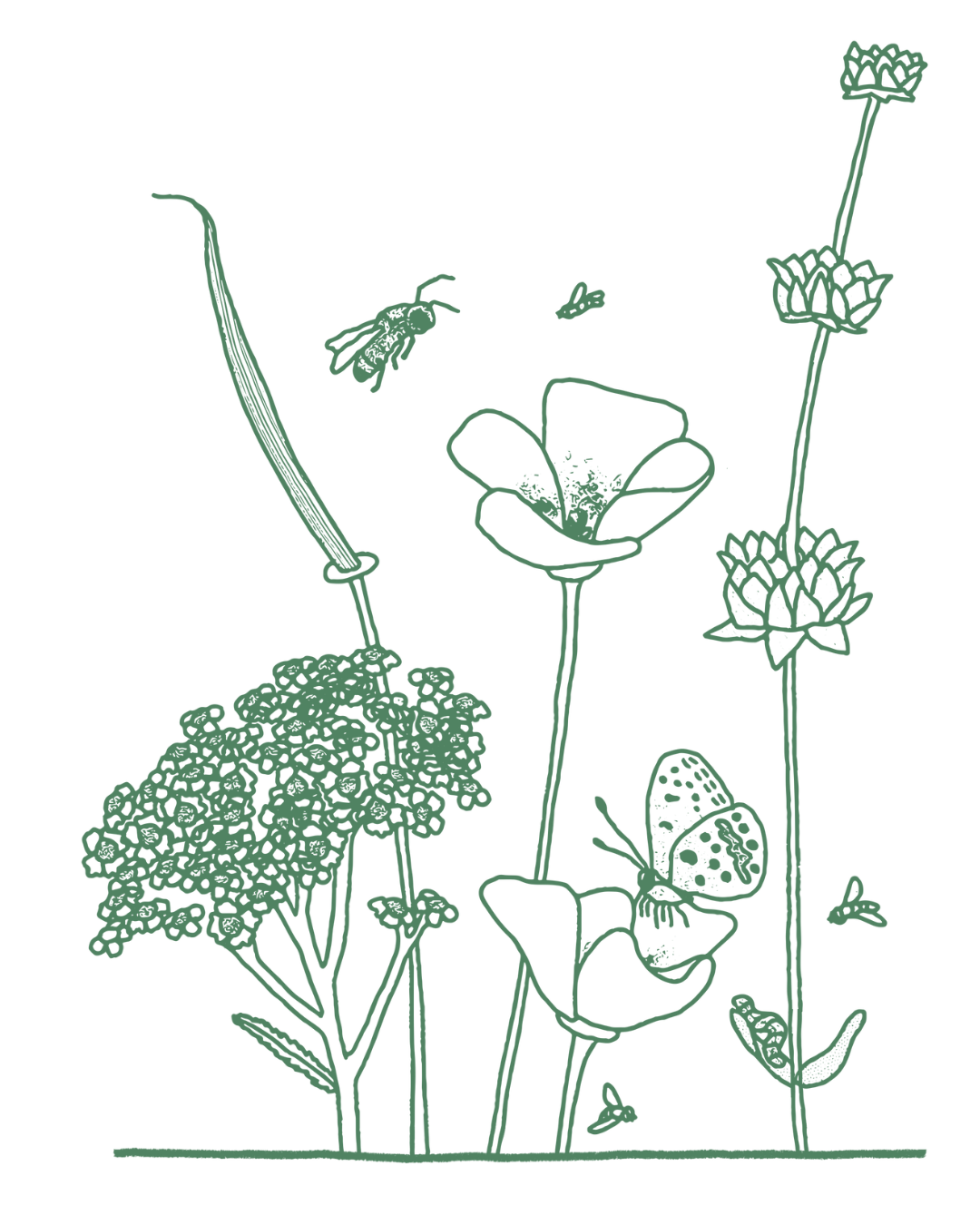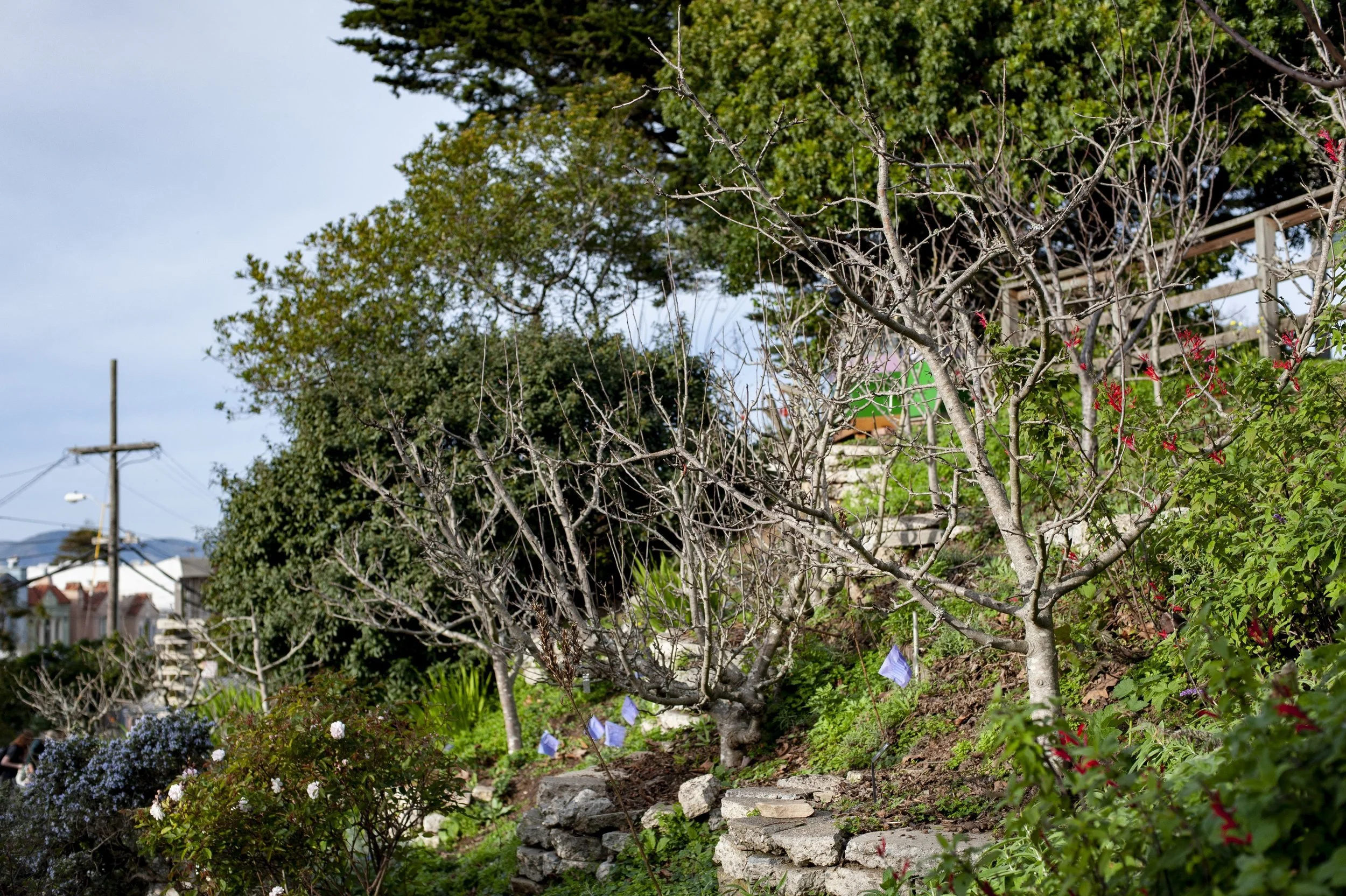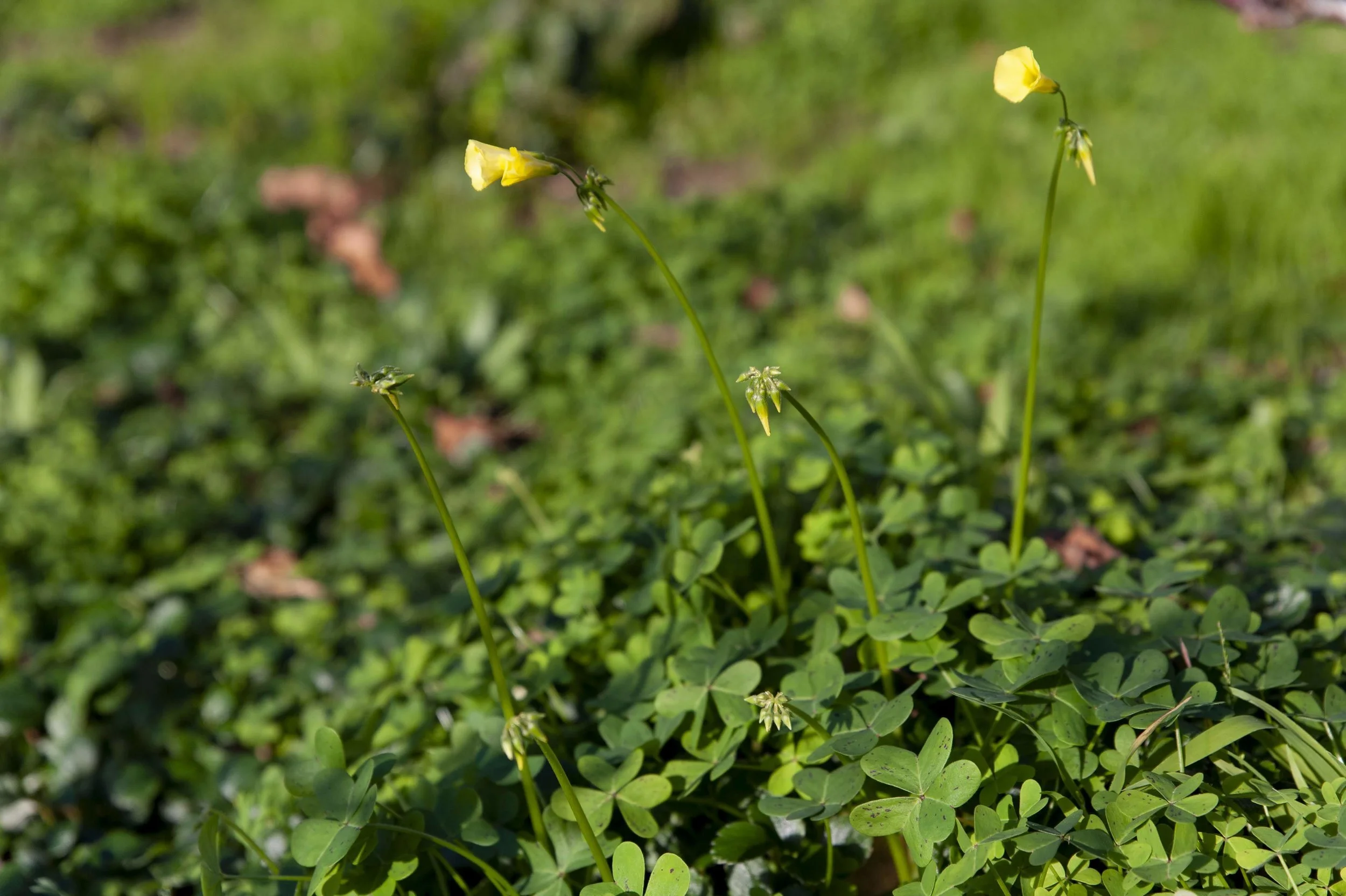Growing Gardeners
Dig into our online garden classroom featuring urban gardening advice, fun projects for kids, and recipes straight from the garden.
Learn to foster a garden that supports your community and local ecology.
How Do Purple Flags Fight Climate Change?
What we are learning now is that the presence of green growing plants is even more important to building a living soil than the presence of decomposing organic matter. By planting a mixed perennial meadow under our fruit trees instead of constantly disturbing the soil with weeding, we are adding much more carbon to our soil over time than we could by simply mulching. While getting rid of the oxalis weeds is great, getting rid of the carbon dioxide that is driving climate change is much more important.
Why the Purple Flags?
If you had walked through GFE in March five years ago and looked uphill into the orchard, you would have seen a solid sea of yellow flowers foaming around the trunks of our fruit trees. What’s a restorative garden team to do? Of course, as an organic garden where no pesticides have been used for over twenty five years, we didn’t consider spraying roundup on the oxalis. We made a long term plan to change the conditions in the orchard so that they no longer favored the oxalis.
Yikes! Oxalis!
At GFE, our south orchard is full of Oxalis pes-caprae, otherwise known as sour grass. This horrible weed originated in South Africa in a climate so similar to ours that it has gone crazy in California, invading everywhere. It’s bright yellow flower and clover-like leaves can be found on roadsides, in restored or disturbed natural areas, parks and gardens. It is relentless and it never sleeps. Many a gardener has spent hours weeding this pest, only to come back a week later and find it fully re-established. So what can we do?
Never Give Up (On Oxalis)
At GFE we are out of control of the oxalis in our steep orchards. That’s the bad news and the good news. The oxalis in the borders and pathways and street tree basins is much reduced, and it is gone in the veggie beds. We’ve achieved this partial control by repeated weeding with a special technique.







